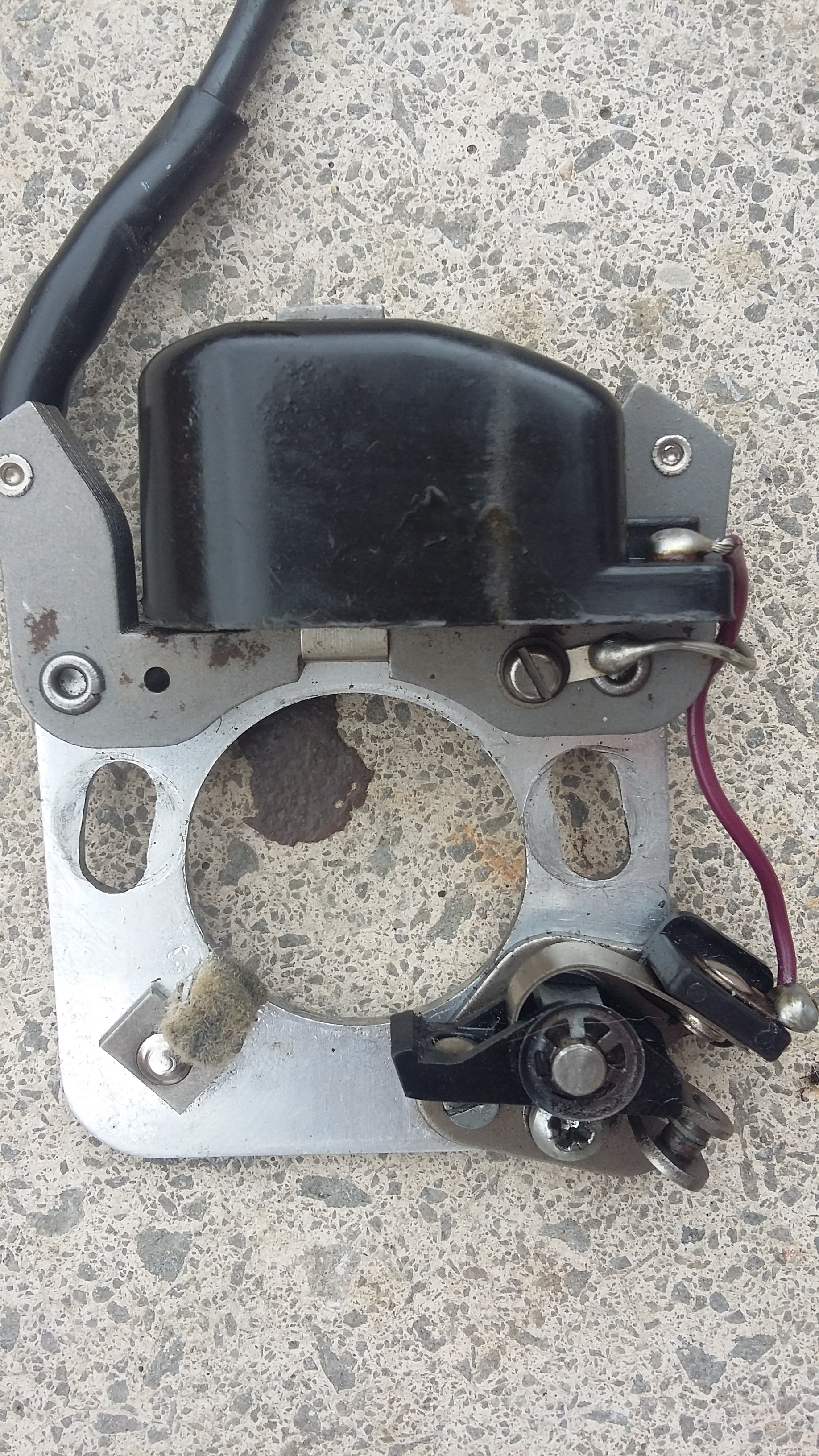Help no spark
Hi everyone, i have just fully built up my second engine, but annoyingly I have no spark. I have checked everything over and can not see a short anywhere. Could I have a fault with the points system. When checking on an avo meter i get continuity where needed. The odd thing I seem to get is the reading is the same if the points are open or closed which to me seems wrong. Can anyone tell me how to check the the coil and condenser unit, and what setting on an avo meter is best.
Forums
Leaving a charged condenser
Leaving a charged condenser on the bench or parts counter was always a source of puerile amusement .
I’m fortunate enough to have a dedicated condenser and coil tester but your method would seem to more or less mimic what it does. On the coil test, particularly with old coils, one has to tread carefully when powering them up over an air gap. Turn it up too far and it can result in internal tracking.
This is the piece in question
This is the piece in question. Thanks for the advice I will see what i can do, an update when fixed (fingers crossed)
I have an engine from an Atco which I believe is a Suffolk. This one works fine and has a different setup (No points).
Hi,
Hi,
I may of confused in my first thread as to the unit I have so have attached the photo above. I am looking to remove the lead tomorrow can i just clarify, is it the silver wire or the reddish lead i disconnect. Also connecting one probe onto the body of the condenser where is this best placed as the body is a sealed unit of plastic. My other mower has a similar condenser pack but no points. It just has a hd lead and a earth wire. This creates a great spark. Is there a reason for having a points system if other units do not have them. This intrigues me as I am not very good with electrics, so am learning as I go. Does anyone know if they ever released a wiring diagram as such.
The original Wipac mag used
The original Wipac mag used on Suffolk (SIF) cast iron engines had a separate coil, condenser and points . The next development was a similar mag and Wipac stator plate but the condenser was embedded within the coil. Finally there were two versions of electronic "pointless" ignitions with either inductive and capacitive modules with no points. As far as I know the original cast iron block SIF motors never had the electronic modules which did not appear until the second generation A98 alloy blocked engine .
Visually, the electronic stators are distinctly different from those with points.


The method I use to test
The method I use to test condensers (I’m not sure if this is an “approved” way of doing it but has always worked well for me!) is to disconnect the wire from the condenser to the points such that the spade connector (or whatever happens to be on the end of the wire coming from the condenser) is sitting suspended in mid-air and not touching any part of the engine. Using a multimeter set to voltage measurement, hold one probe on the body of the condenser and the other on the spade connector. Note the voltage. Next, set the multimeter to measure resistance and place the probes as before, this applies a voltage charging the condenser. Switch the multimeter back to voltage measurement and replace the probes. If the condenser is ok, the value will be higher than that noted initially as the resistance test will have charged the condenser. Remember the reading. Remove the probes again and wait ten seconds or so then replace the probes to confirm that the condenser has held the charge. If the voltage has dropped off significantly, the condenser is likely to be defective.
Do not touch the body of the condenser or the engine and the spade connector at the same time and when it is charged, use something like an insulated screwdriver to short the spade connector back to the engine before handling it.
I’m interested to hear the views of others on this because, as I say, this is how i do it but there may be a better way.